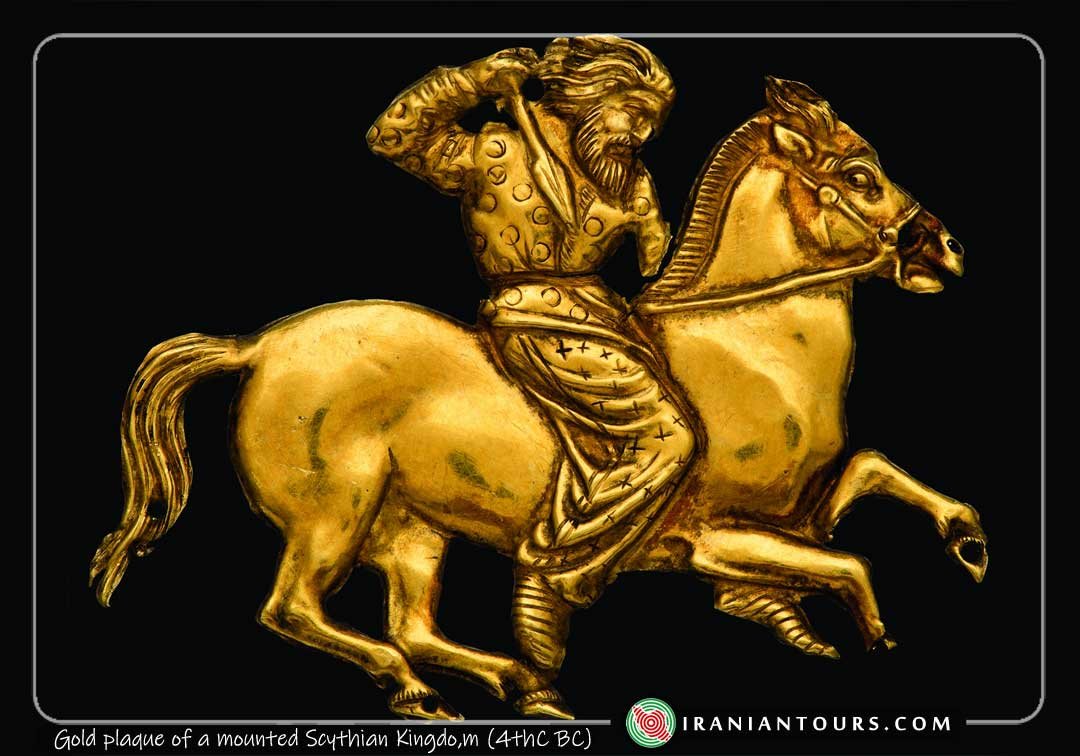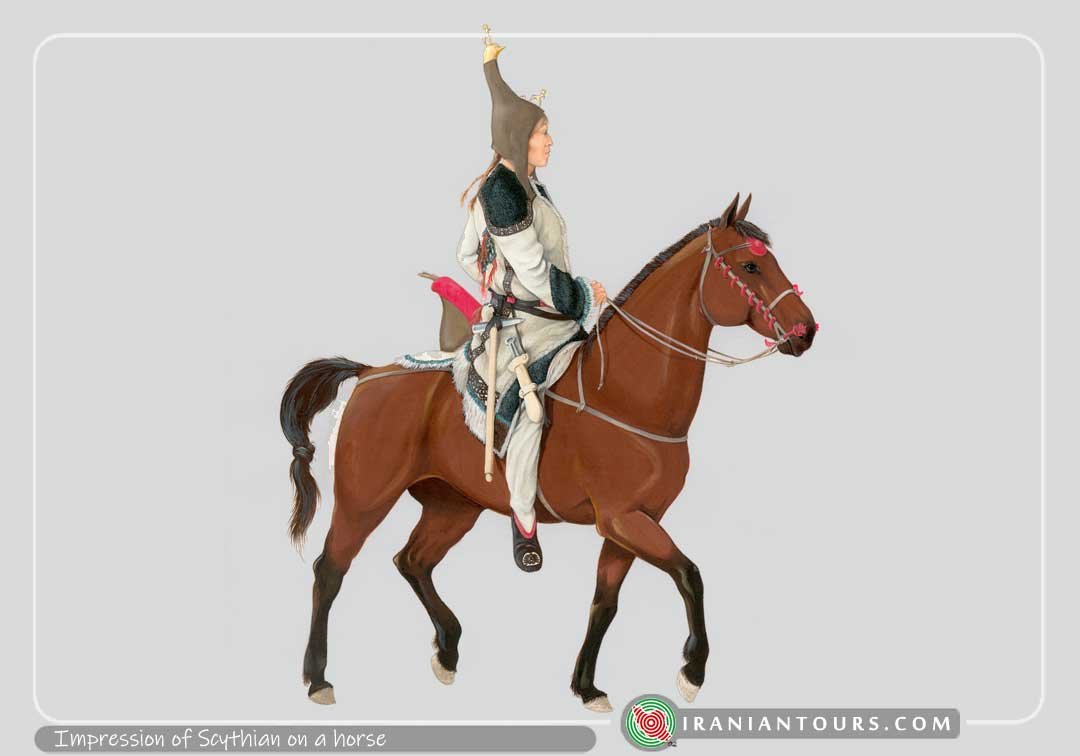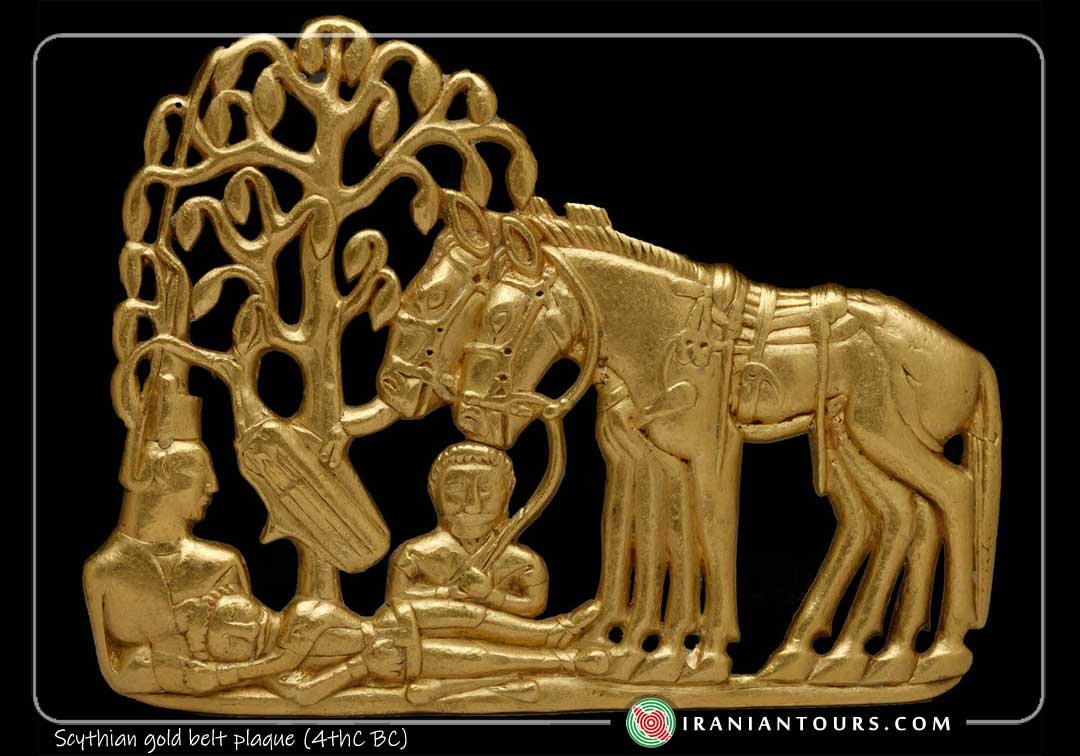



Timeline
The Scythians, also known as Scyth, Saka, Sakae, Iskuzai, or Askuzai, were a nomadic people who dominated Pontic steppe from about the 7th century BC up until the 3rd century BC. They were part of the wider Scythian cultures, stretching across the Eurasian Steppe, which included many peoples that are distinguished from the Scythians. Because of this, a broad concept referring to all early Eurasian nomads as “Scythians” has sometimes been used. Within this concept, the actual Scythians are variously referred to as Classical Scythians, European Scythians, Pontic Scythians, or Western Scythians. Use of the term “Scythians” for all early Eurasian nomads has however led to much confusion in literature, and the validity of such terminology is controversial. Other names for that concept are therefore preferable.
The Scythians are generally believed to have been of Iranian origin. They spoke a language of the Scythian branch of the Eastern Iranian languages, and practiced a variant of ancient Iranian religion. Among the earliest peoples to master mounted warfare, the Scythians replaced the Cimmerians as the dominant power on the Pontic Steppe in the 8th century BC. During this time they and related peoples came to dominate the entire Eurasian Steppe from the Carpathian Mountains in the west to Ordos Plateau in the east, creating what has been called the first Central Asian nomadic empire. Based in what is modern-day Ukraine and southern Russia, the Scythians were led by a nomadic warrior aristocracy known as the Royal Scythians, who called themselves Scoloti.
In the 7th century BC, the Scythians crossed the Caucasus and frequently raided the Middle East along with the Cimmerians, playing an important role in the political developments of the region.
Around 650–630 BC, Scythians briefly dominated the Medes of the western Iranian Plateau, stretching their power to the borders of Egypt. After losing control over Media, the Scythians continued intervening in Middle Eastern affairs, playing a leading role in the destruction of the Assyrian Empire in the Sack of Nineveh in 612 BC. The Scythians subsequently engaged in frequent conflicts with the Achaemenid Empire. The Scythians suffered a major defeat against Macedonia in the 4th century BC and were subsequently gradually conquered by the Sarmatians, a related Iranian people living to their east. In the late 2nd century BC, their capital at Scythian Neapolis in the Crimea was captured by Mithradates VI and their territories incorporated into the Bosporan Kingdom. By this time they had been largely Hellenized. By the 3rd century AD, the Sarmatians and last remnants of the Scythians were dominated by the Alans, and were being overwhelmed by the Goths. By the early Middle Ages, the Scythians and the Sarmatians had been largely assimilated and absorbed by early Slavs. The Scythians were instrumental in the ethnogenesis of the Ossetians, who are believed to be descended from the Alans.
The Scythians played an important part in the Silk Road, a vast trade network connecting ancient Greece, Persia, India, and China, perhaps contributing to the contemporary flourishing of those civilisations. Settled metalworkers made portable decorative objects for the Scythians. These objects survive mainly in metal, forming a distinctive Scythian art.
The name of the Scythians survived in the region of Scythia. Early authors continued to use the term “Scythian”, applying it to many groups unrelated to the original Scythians, such as Huns, Goths, Turks, Avars, Khazars, and other unnamed nomads. The scientific study of the Scythians is called Scythology.
